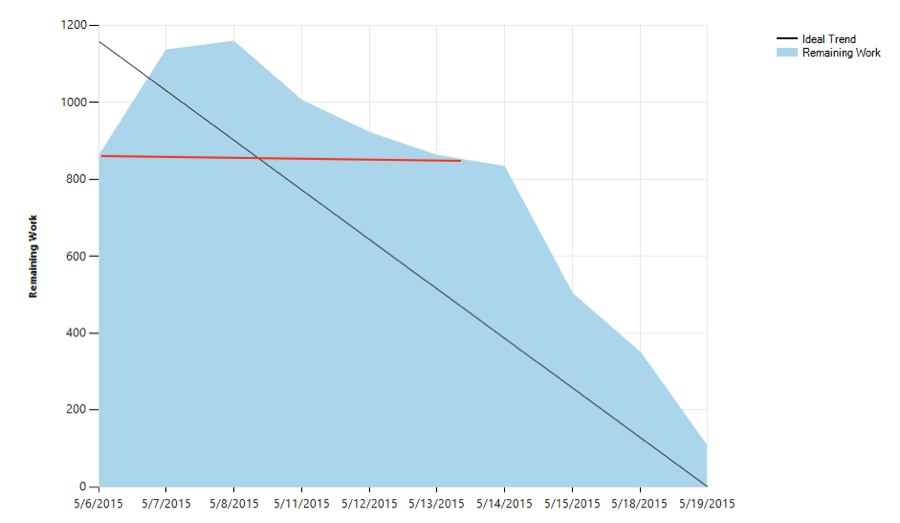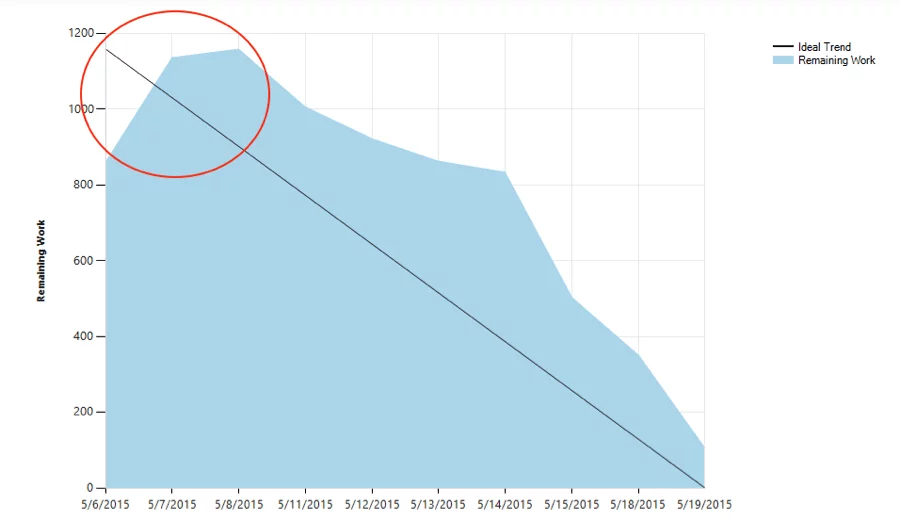It’s About Finishing, Not About Starting
When I’m teaching an agile bootcamp class and talking about work in process, I always make a point (usually multiple times) to tell the attendees that agile is about finishing work…not about starting work. I reinforce this by pointing out that you can have a glorious looking burndown chart for the duration of the sprint but completely fail in your mission to meet your commitments and finish stories. The team can be burning down hours beautifully on a daily basis, with the remaining task hours looking like they are tracking right along the ideal line, and then boom… It’s closing time for the sprint and no stories actually got completed.
Remember that notion of building working, tested software? Didn’t happen. The team started too many stories at once and ended up not being able to bring any of them across the finish line when the bell rang.
This notion of finishing work applies to sprint planning as well. If you short-change the time it takes to do good sprint planning, and the team meanders off to begin writing code and test plans too soon, there is a risk that the team is going to struggle to be successful.
Remember what we do in sprint planning. Consider velocity, and load the sprint backlog with high priority stories from the product backlog. Check. Determine capacity for the team to work on sprint tasks over the coming sprint. Check. Break stories into tasks and determine who is doing what. Check. Make sure the work is going to fit. Check. Commit to the work. Check.
But what can happen when you don’t take the time to thoughtfully break down tasks and estimate hours of effort? Consider the following burn down chart.
In this example, the team left sprint planning thinking that they were committing to 830 hours. But just two days into the sprint they discovered additional task hours and instead found themselves in the awkward position of actually needing almost 1200 hours of capacity to complete the committed stories. Guess what…they did not have 1200 hours of capacity to give, especially since they were now a full two days into the work.
In looking more closely at their burndown chart over the course of the two-week sprint, it took them almost 6 days of work to get back to the point where they had 830 hours of work left to do. Six days just to get back to where they thought was their starting point when they concluded their sprint planning meeting.

And surprise, they didn’t finish the sprint successfully.
So, don’t short-change the value that good sprint planning affords. Yes, it takes time. Yes, it can seem tedious. Yes, the team is anxious to get started.
But good sprint planning pays dividends.
Remember that it is about finishing work, and not about starting work.

